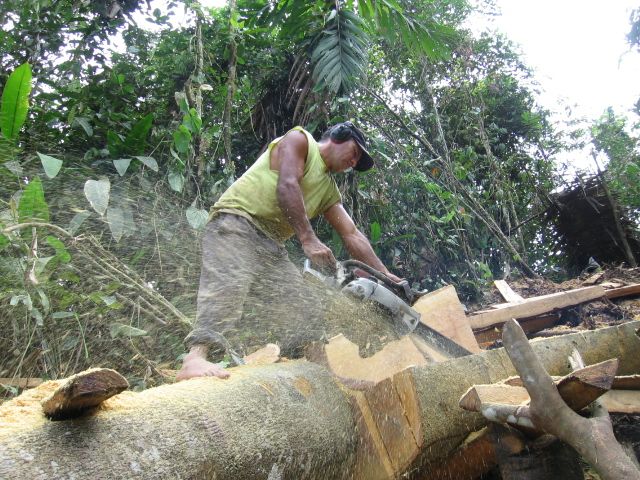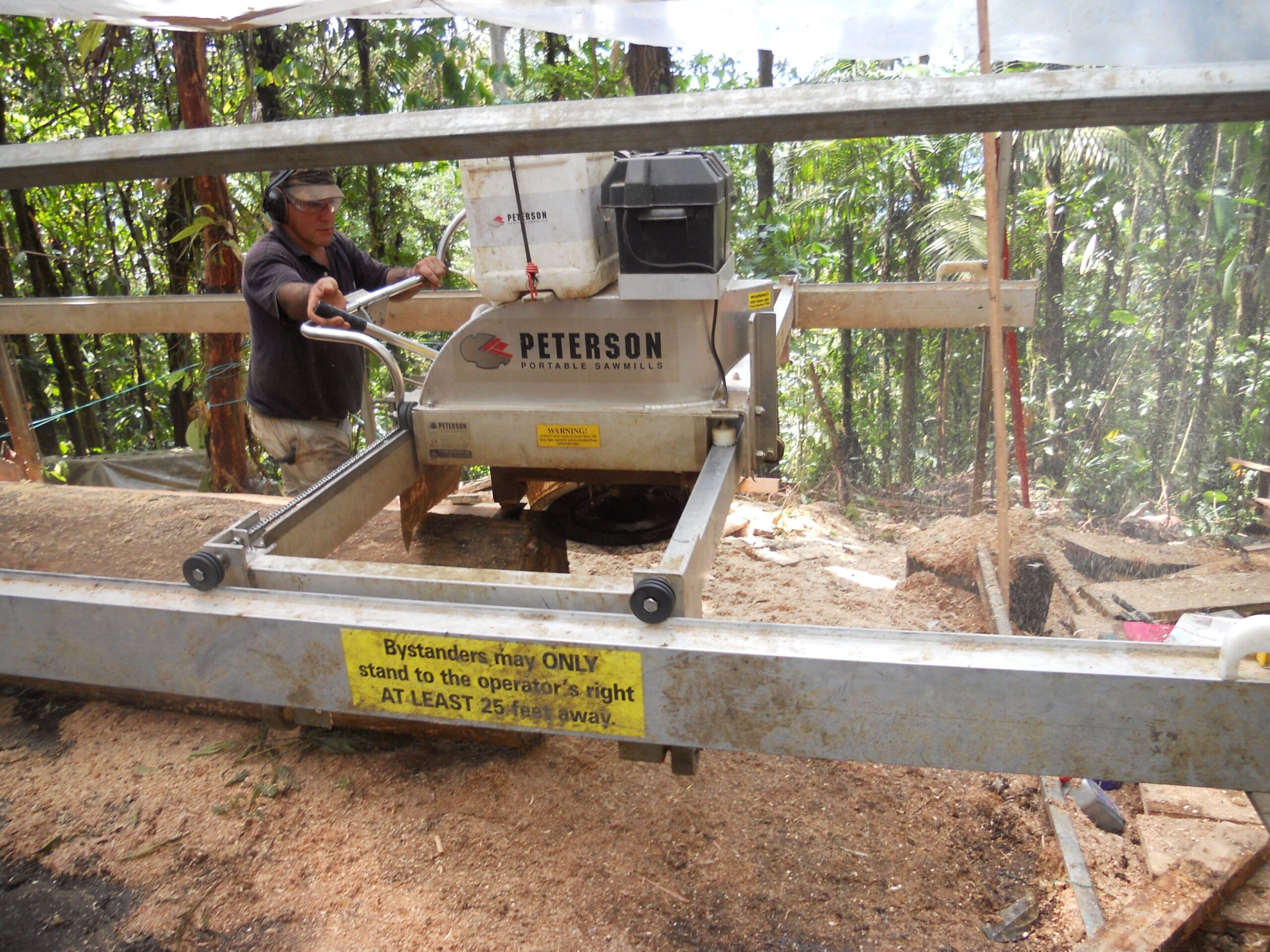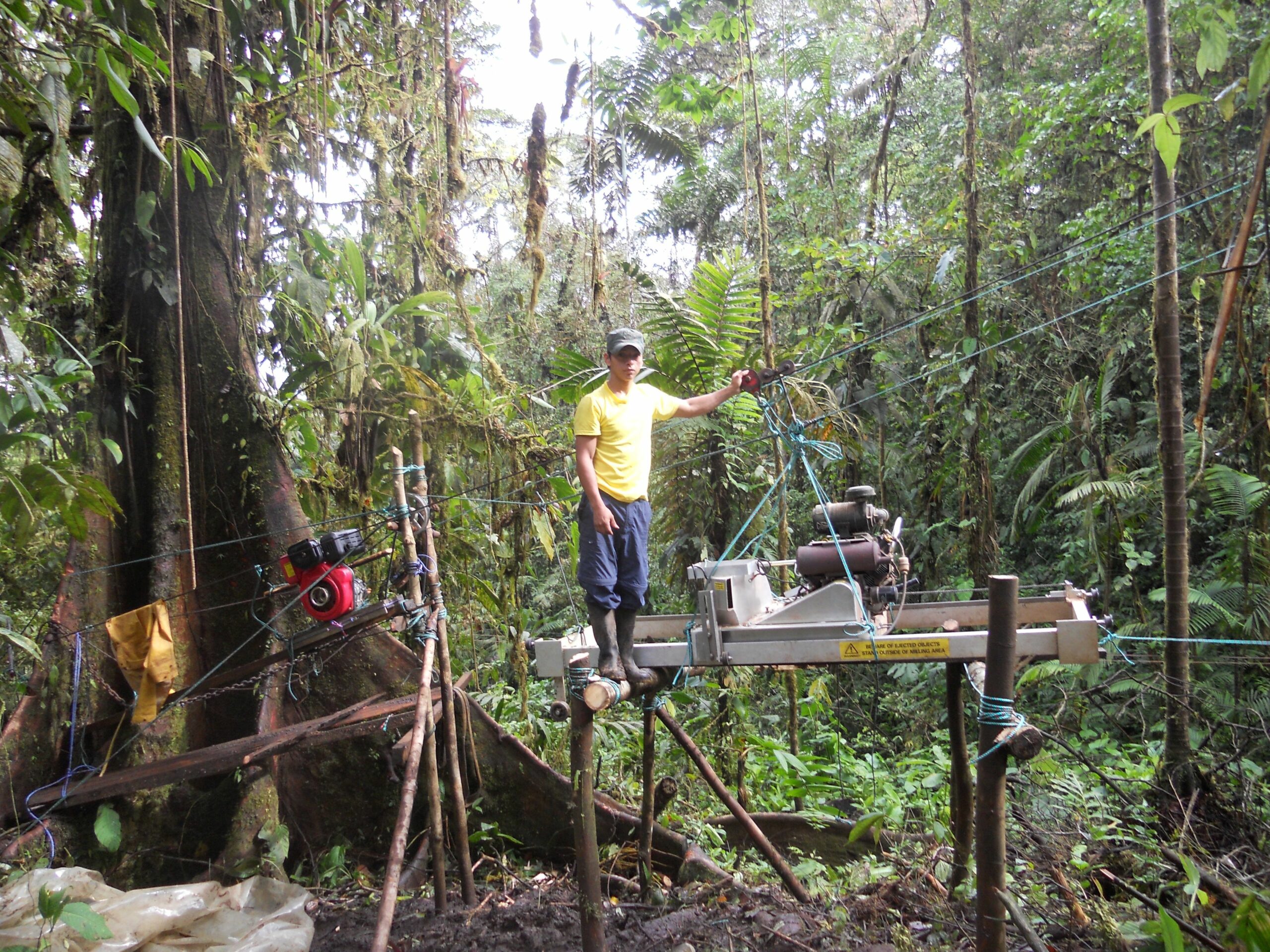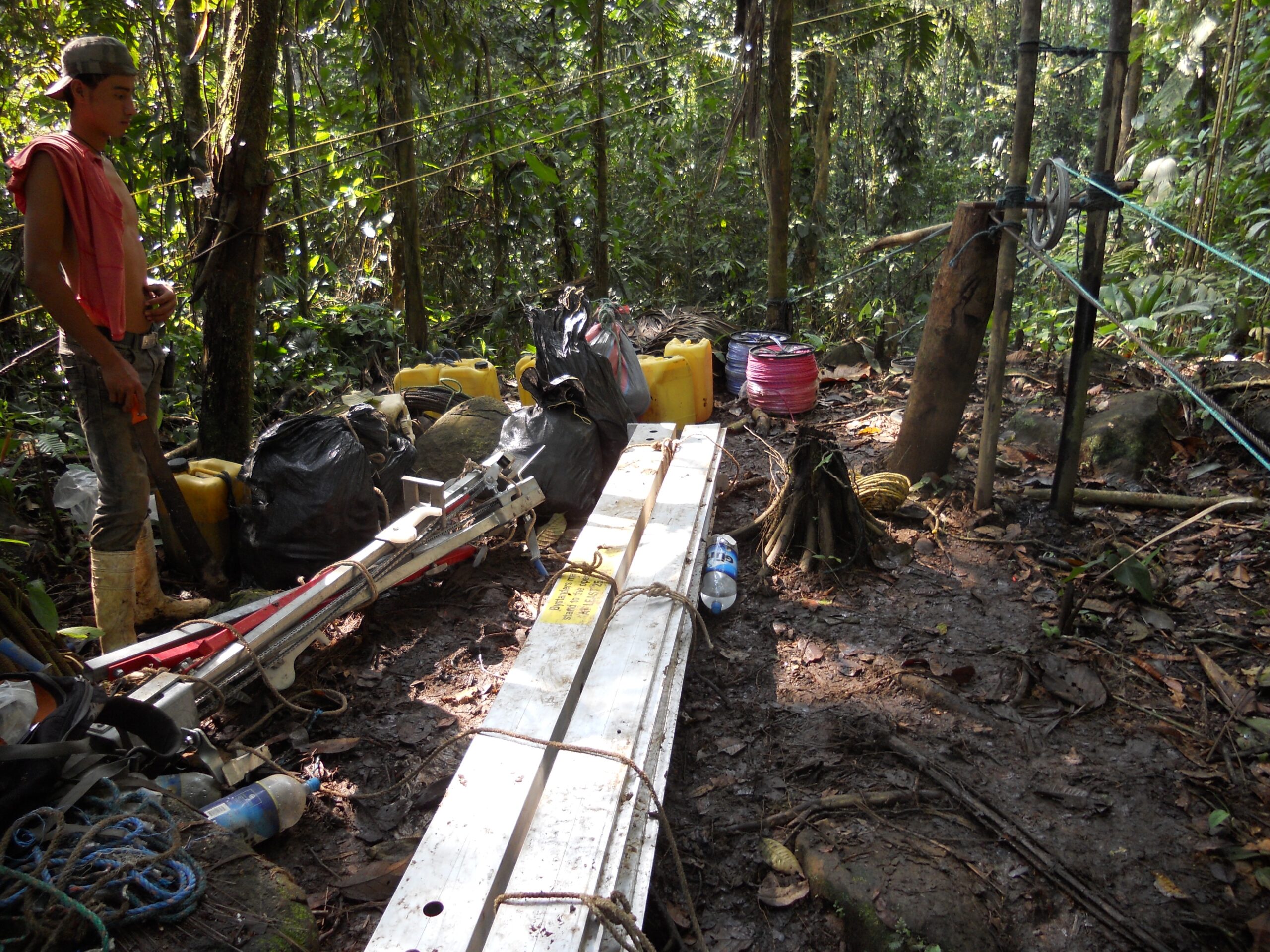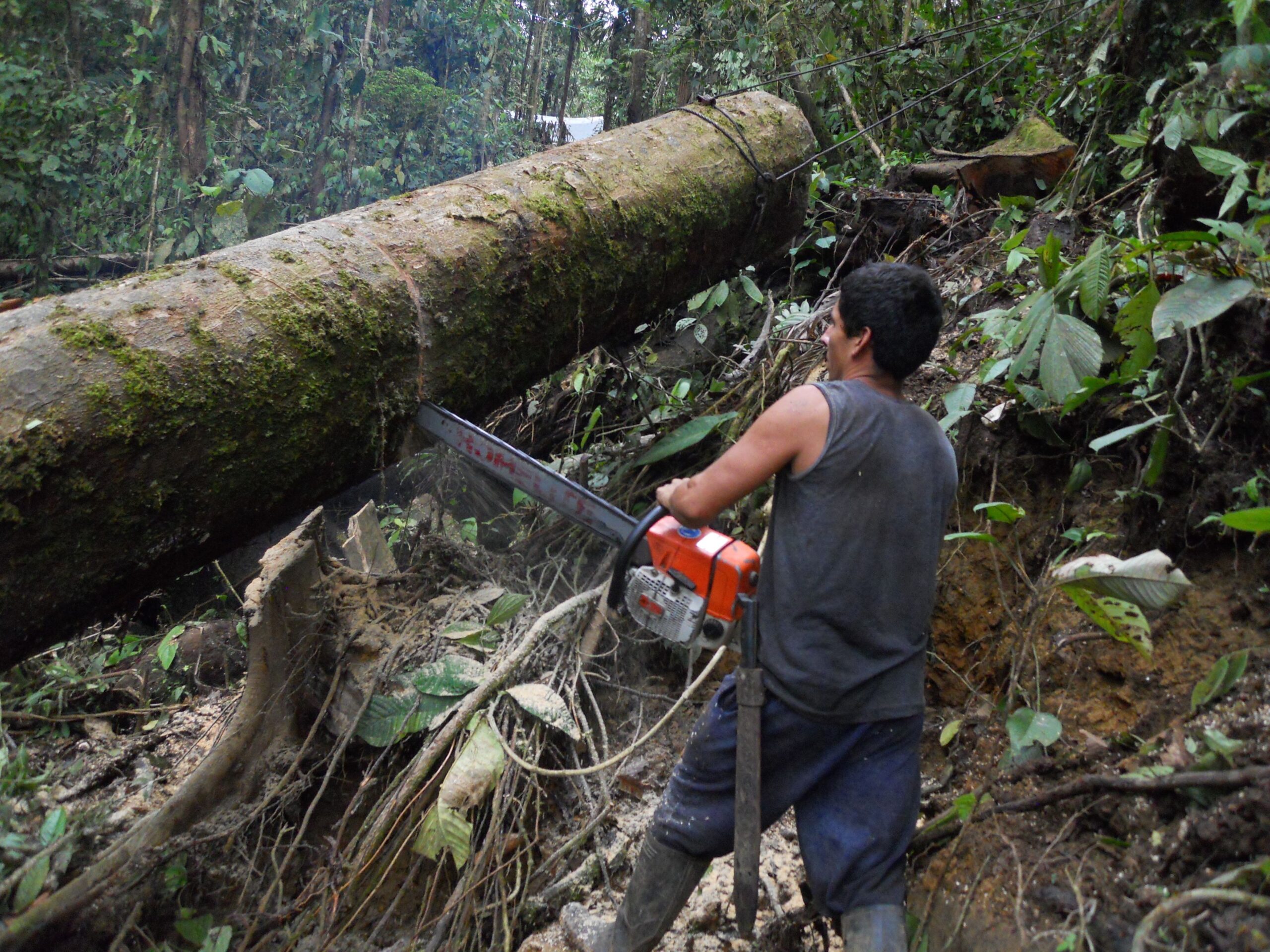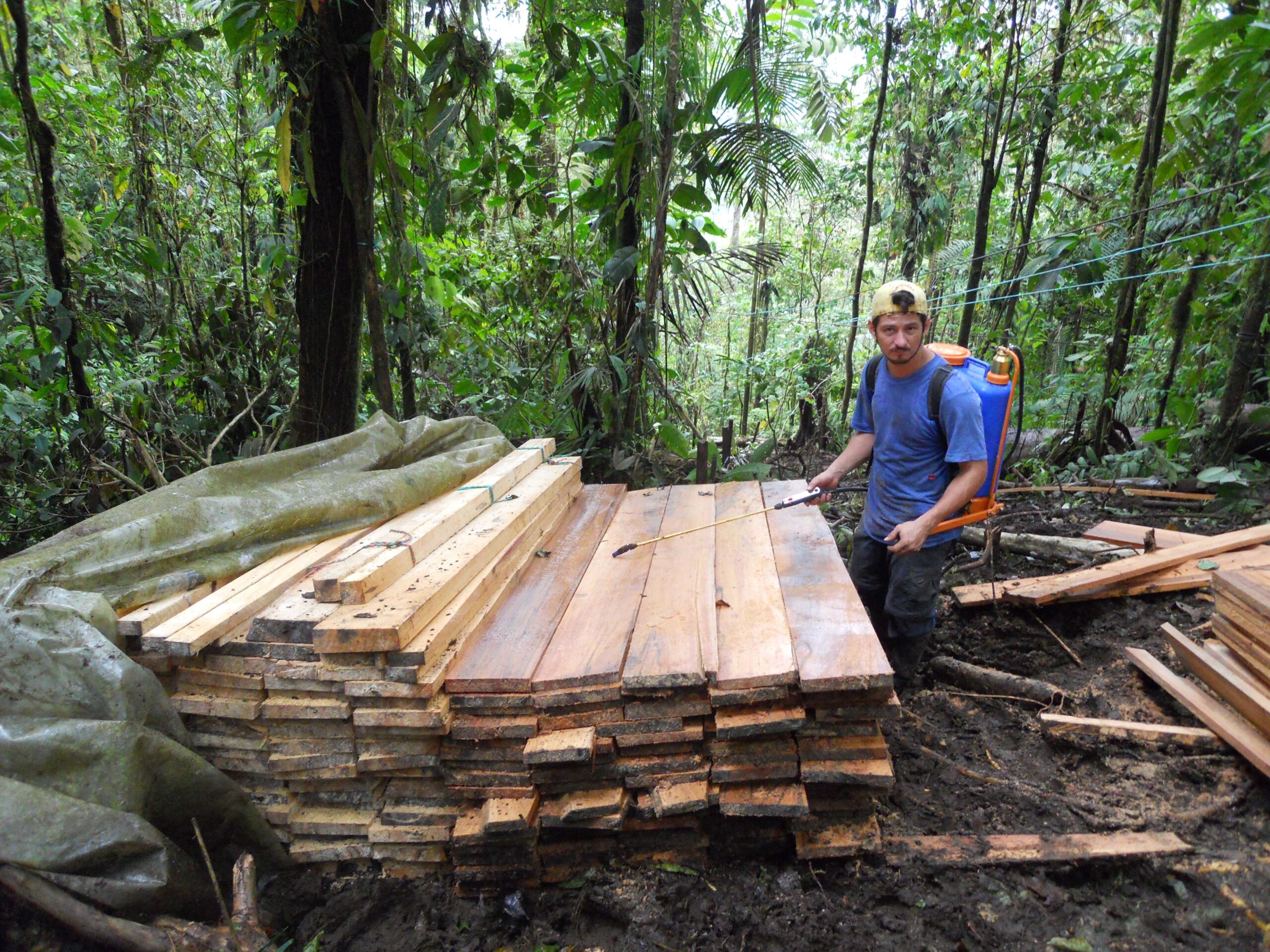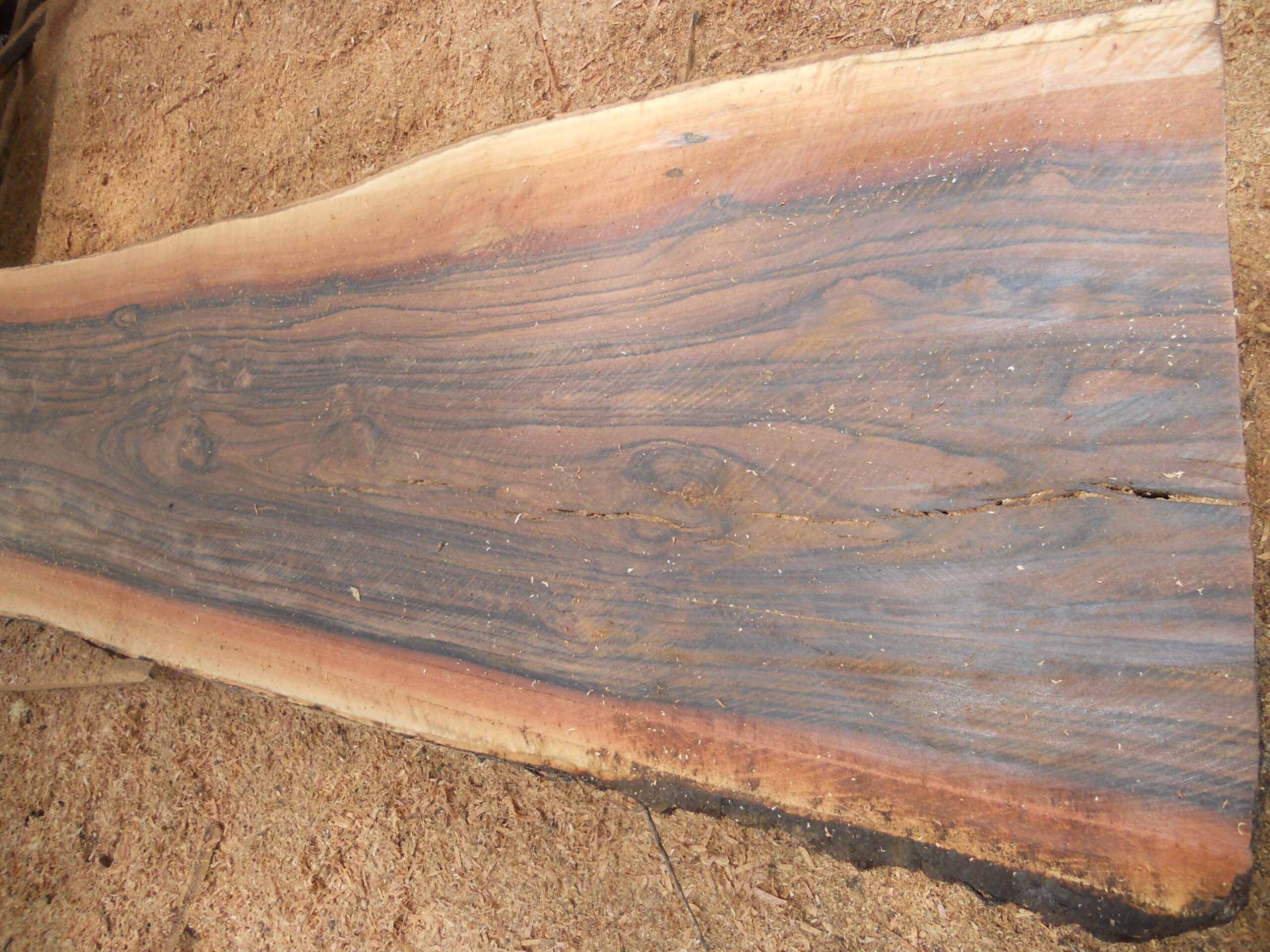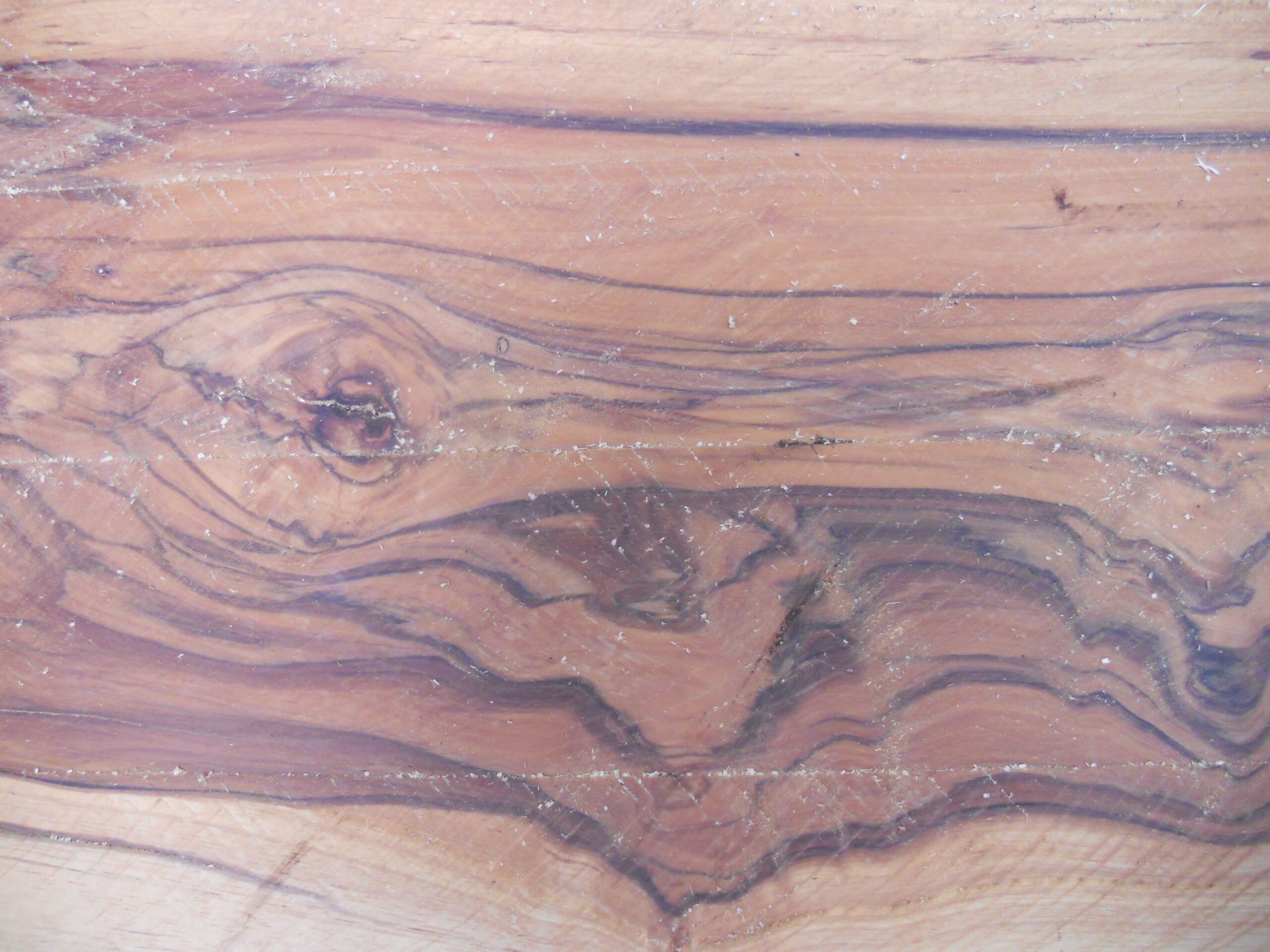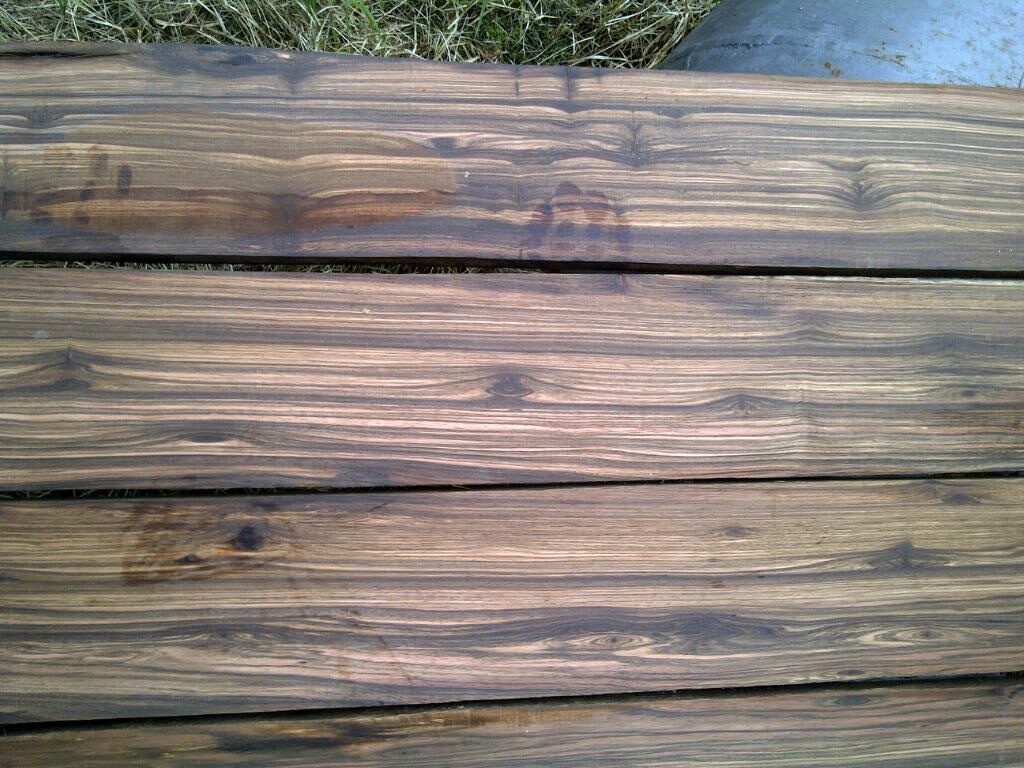During the last six months, the Peterson ATS machine has been run much more seriously. Blair has personally spent a lot of time at the milling sites getting involved. He says “I really enjoy watching a log open up and seeing the individual character between and within species”.
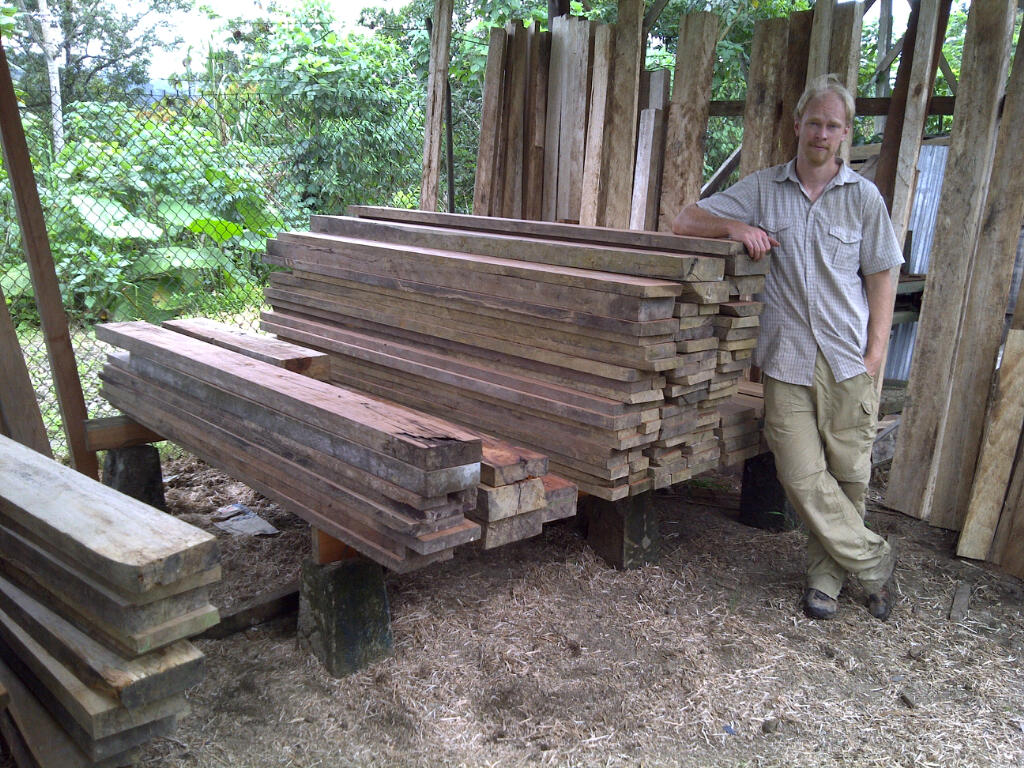
The main timbers in Ecuador are Pine and Eucalyptus in the Sierra, and of course the classic neotropical timbers in the jungle. Timber in high demand include Mahogany, Spanish Cedar, Ipe, and Plywood Peelers. High silica content in some species such as Tillo (brosium alicastrum), Varra Negra (Zygia spp), and Copal (Protium spp), makes for tough milling. Blair’s organization also has 30 hectares of balsa plantation.
Blair plans to harvest over 40 native species, most of which have no current international market, on a sustainable harvesting schedule. EcoMadera’s primary focus is on responsible, long term management of their forest. This means utilizing many species that are less than spectacular. Engineered flooring and similar products are a practical way to integrate these timbers. They will need to carry out extensive wood testing and provide samples to judge the market in the US. Two such species are the Sapan Palo and the Guayabillo, both attractive hardwoods suitable for flooring or craft furniture. A much darker timber is the Clavellin, which is locally known and used for instruments. Little documented information can be found on its properties, but it appears to be very heavy and very hard. So again, sample boards will be sent to the organisation’s US purchaser to investigated potential uses.
The business uses the Peterson ATS mill in the Choco Wet Forest of NW Ecuador. It is a very wet forest with no real dry season, and total rainfall is between 4 and 5 metres per year.
Blair reports that the mill has done extremely well, “For our application it’s perfect. Liquid soap in the cooling water helps with sticky resin and the blades perform well in hardwoods. The only modification we made later, was cutting down the 5.7m rails in half for even easier transport. Plus I’d recommend the largest hp motor if you are intending to saw hardwoods frequently. Our favorite feature of the Peterson has to be its portability. The motor and carriage can be easily disassembled into three lighter parts for transport. We greatly appreciate the ease of breaking it down, hauling it in piece by piece, and establishing a new site. I really love the simplicity of sharpening and all-round durability.” Don Gerardo Salinas said, after milling his first log on the Peterson, “This is way better than free-hand chainsaw milling. And in spite of the distance, the service by Peterson’s has been excellent.”

The sawmill is first moved in by boat, by hand, and by cable winch into a sawmilling site. Blair’s current harvest site is located on a 400-hectare block owned by the business. When asked about the challenges of sawing in Ecuador, Blair explained “Our operations are in a mountainous region of tropical forest. We have to cable in the sawmill for over 5km. Some of the steeper sites are over 45 degrees, requiring substantial chalking on the supports. We have two Habeggar chainsaw winches that assist in hauling logs to the mill. We generally install a 60 meter section of 1/2″ steel cable, drag logs into the corridor and haul them partially suspended to be decked.
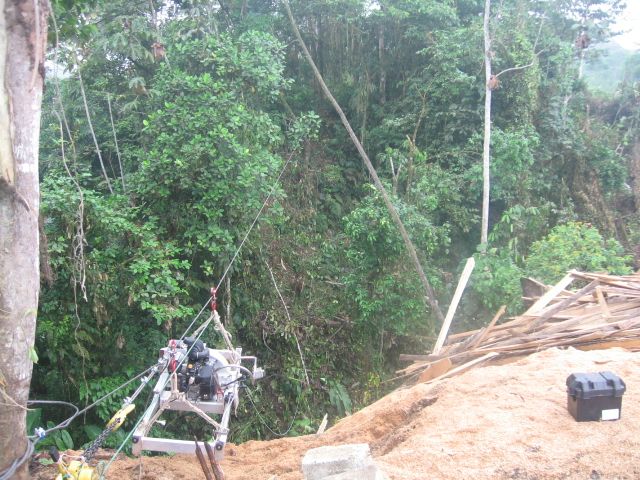
The sawmill stays in a site until we’ve harvested a radius around the site with a total area of roughly two hectares. With our selective cutting system this equates to approximately 40-50 cubic metres of logs. The amount of logs dragged to the saw per day is highly dependent on terrain and distance from the saw. Moving the short skyline takes a few hours. Initial studies show that we can saw 2 to 4.5 m3 of lumber per day in this manner, dependent on species.
The farm is a 4-hour hike from our plant. We work 10-hour days, and have two hitches of nine days per month. The current saw site is only 15 minutes (one-way) from a small house we constructed on the farm. Commute time for the workers taking wood down the cables, varies from fifteen minutes to an hour and a half (one-way).”

